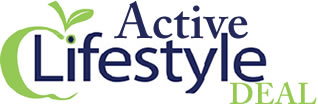Reading nutrition labels is one of the easiest ways to make smarter choices at the grocery store. Labels provide a snapshot of what is inside a product and how a serving fits into daily nutrient needs. Recent updates to nutrition labeling and public health guidance have made some elements easier to find and interpret. However, confusion still exists around serving sizes, added sugars, percent Daily Value, and ingredient lists.
This guide explains how to read modern nutrition labels step by step, highlights what matters most for health, suggests tools and apps that speed shopping decisions, and offers practical product examples for common categories.
Start With Serving Size And Servings Per Container
The serving size is the first number to check because all nutrient amounts on the label apply to one serving. Serving sizes are based on how people typically eat or drink now, not on recommended portion sizes, so that a single package may contain multiple servings. If a bottle contains two servings and each serving has 150 calories, drinking the whole bottle means consuming 300 calories. Recent label revisions make serving size and servings per container easier to find and read by using larger, bolder type.
Practical tip: Compare the label’s serving size to the amount actually consumed. If the serving is 1 cup but the container holds 2 cups, adjust nutrient totals accordingly.
Check Calories Per Serving Next
Calories quantify the energy in a serving and help manage weight or energy balance. Newer labels emphasize calories with a larger font to improve visibility. For weight management, note calories per serving and scale up to the actual portion consumed. Calories are a starting point and should be considered alongside nutrient quality and satiety potential.
Practical tip: Pair calorie awareness with protein, fiber, and fat content to judge how satisfying a serving will be. Higher protein and fiber normally improve satiety.
Read The Macronutrient Line: Total Fat, Carbohydrate, Protein
The macronutrient section shows grams of total fat, saturated fat, trans fat, total carbohydrate, dietary fiber, total sugars, and protein. Saturated and trans fats are best limited for heart health, while unsaturated fats are generally preferable. Carbohydrate totals matter most for people managing blood sugar or following specific diets. Protein in grams helps assess how filling a serving might be. The label will list fiber under carbohydrates, which is important for digestion and long-term health.
Practical tip: Look for snacks or quick meals with higher fiber and protein per serving when choosing between options.

Focus On Added Sugars And How Much Is Too Much
One of the biggest label changes in recent years is the separate line for added sugars. Added sugars are those incorporated during processing or preparation and do not include naturally occurring sugars in fruits or dairy. The Daily Value for added sugars is set at 50 grams per day for a 2,000-calorie diet, and public health guidance suggests keeping added sugars under 10 percent of daily calories. New labels report added sugar grams and the percent Daily Value to help shoppers see how a product contributes to daily limits.
Practical tip: A product with 20 grams of added sugar equals 40 percent of the 50-gram Daily Value, so a single packaged snack can consume much of a daily allowance.
Use Percent Daily Value To Compare Products
Percent Daily Value (DV) indicates how much a nutrient in one serving contributes to the recommended daily intake. The %DV helps compare products quickly. For nutrients to limit, such as sodium, saturated fat, and added sugars, look for lower %DV. To get enough nutrients, such as fiber, calcium, vitamin D, and potassium, look for higher %DV values. Labels now require vitamin D and potassium to be listed, reflecting updated nutrient priorities.
Practical tip: As a rule of thumb, 5 percent DV or less per serving is low, while 20 percent DV or more per serving is high.
Inspect The Ingredients List For Hidden Details
The ingredients list reveals what is actually in the food in order of predominance by weight. Ingredients listed early on are the largest components. Watch for many forms of added sugar hidden under names such as corn syrup, maltose, sucrose, dextrose, or anything ending in “ose.” Also look for sodium under terms like sodium chloride, monosodium glutamate, or sodium nitrite. If a product claims to be “whole grain,” check that a whole grain ingredient appears first on the list to confirm it is the primary grain source.
Practical tip: Shorter ingredient lists with recognizable words usually indicate simpler, less processed foods.
Put Sodium And Potassium In Context
Sodium is often high in packaged and restaurant foods and can raise blood pressure when consumed excessively. Many labels include %DV for sodium to show how a serving fits into the daily recommendation. Potassium, now required on labels, is a nutrient to encourage because it helps offset sodium’s effects on blood pressure and supports muscle function. Look for products that provide potassium without excessive sodium.
Practical tip: Compare similar products for sodium per serving. For example, canned beans rinsed and drained typically have much less sodium than their non-rinsed counterparts.
Use Fiber And Protein To Gauge Satiety
Dietary fiber and protein both support fullness and slow digestion, helping control appetite and blood sugar. Labels that show higher fiber and protein per calorie are often better choices for snacks and ready meals. The %DV for fiber can help determine how a serving contributes toward daily fiber goals. Aim for foods that deliver at least 3 to 5 grams of fiber per serving when possible.
Practical tip: Pair carbohydrate-rich items with protein or fiber to reduce glucose spikes. For example, choose yogurt with nuts instead of yogurt alone.
Watch For Front-Of-Pack Claims And Marketing Words
Buzzwords on the front of packaging can be misleading. Claims like natural, multigrain, low fat, light, made with whole grains, or no added sugar require scrutiny on the nutrition facts panel and ingredients list. The FDA has proposed clearer front-of-pack labeling to help consumers identify high, medium, or low levels of sodium, saturated fat, and added sugar, but until such labeling becomes standard, always verify the back label for the full picture.
Practical tip: Treat front-of-pack claims like an invitation to check the facts. If a product proclaims “low sugar” but lists 12 grams of added sugar per serving, the claim needs closer review.
Use Tools And Apps To Speed Decisions In Store
Barcode scanning apps and nutrition trackers make label reading faster and more actionable. Apps such as Yuka, Fooducate, Cronometer, and MyFitnessPal scan barcodes, summarize nutritional pros and cons, and help track daily totals. Yuka, for example, scores products based on nutrition, additives, and other factors to provide a quick rating. These tools cannot replace knowledge, but they make comparisons easier when time is short.
Practical tip: Use an app to shortlist products while shopping, then confirm your choices by reading the label for serving size and ingredient details.
Practical Product Examples And What To Watch For
Below are common grocery categories with examples of what to prefer and what to avoid.
Yogurt: Plain Greek yogurt typically has more protein and less added sugar than flavored varieties. If choosing flavored yogurt, compare added sugars and portion sizes. Consider brands that offer plain options you can sweeten with fruit.
Breakfast Cereal: Many cereals are high in added sugar and low in fiber. Choose whole grain cereals with at least 3 grams of fiber and low added sugar per serving. Choose cereals that list whole grain as the first ingredient.
Bread: Whole-grain or whole wheat breads provide more fiber than white bread. Check the ingredients list to ensure “whole” grain appears first and that added sugars or syrups are minimal.
Snack Bars: Bars vary widely. Some contain high amounts of added sugar and refined oils. Seek bars with whole nuts, seeds, and minimal added sugar. Compare calories and sugar per serving to find a bar that supports energy without excess sweetness.
Prepared Meals: Prepackaged meals can save time, but often contain higher sodium. Look for meals with reasonable calorie counts, balanced macronutrients, and sodium under 600 mg per serving when possible.
Practical tip: When comparing similar items, standardize to per 100 g or per package values if serving sizes differ greatly. This levels the playing field when making a choice.
Label Reading Habits For Special Diets
Nutrition labels are especially helpful when managing conditions such as diabetes, hypertension, kidney disease, or food allergies. People with diabetes should watch total carbohydrate and added sugar. Those with high blood pressure should prioritize a low-sodium diet. Anyone with allergies must read the allergen declarations and ingredients list carefully. For clinical conditions, partnering with a registered dietitian or healthcare provider ensures label interpretation aligns with medical guidance.
Practical tip: Many labels include an allergens statement below the ingredients. If uncertain, contact the manufacturer for clarification.
Shopping Strategies And Meal Planning
Adopt a label-first shopping strategy. Pick a category, compare the top two or three options using serving size, added sugars, sodium, and %DV for fiber and protein. Meal planning simplifies label usage because recurring purchases become familiar and easier to judge quickly. Keep a small checklist in a phone note: serving size, calories per serving, added sugars per serving, sodium per serving, fiber, and protein (grams). Over time, label reading becomes intuitive, leading to smarter choices without slowing down trips.
Practical tip: When trying a new brand, buy one package first and test how it fits into daily energy and nutrition needs before switching fully.
Nutrition labels are powerful tools for empowering food choices. Serving size, calories, added sugars, sodium, fiber, and ingredient order are the high-value points to check on every label. Use percent Daily Value to compare products quickly and rely on trusted scanner apps to speed decisions when needed. With updated labels and growing app support, it is easier than ever to shop with confidence. Practice reading labels regularly and match choices to personal health goals and lifestyle needs. A few small label-driven swaps each shopping trip add up to meaningful improvements in diet quality over time.



